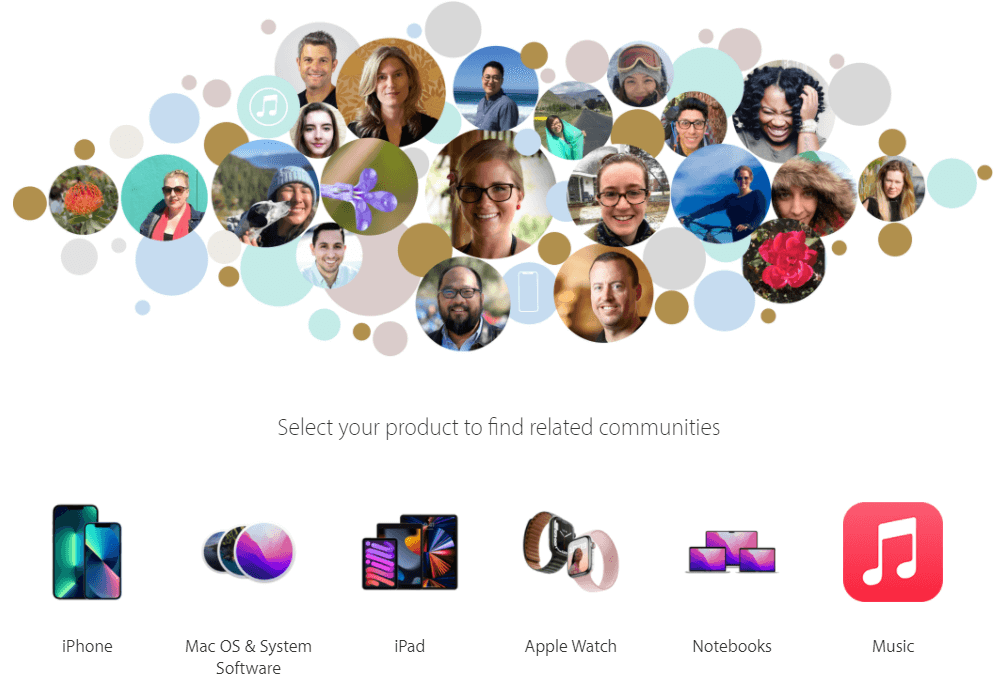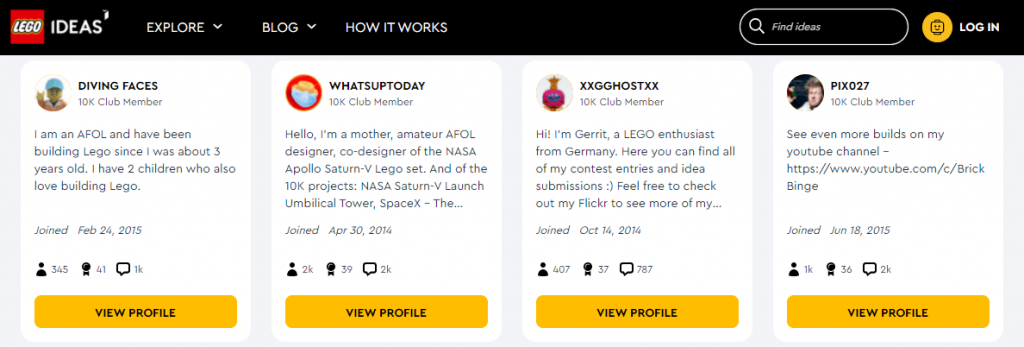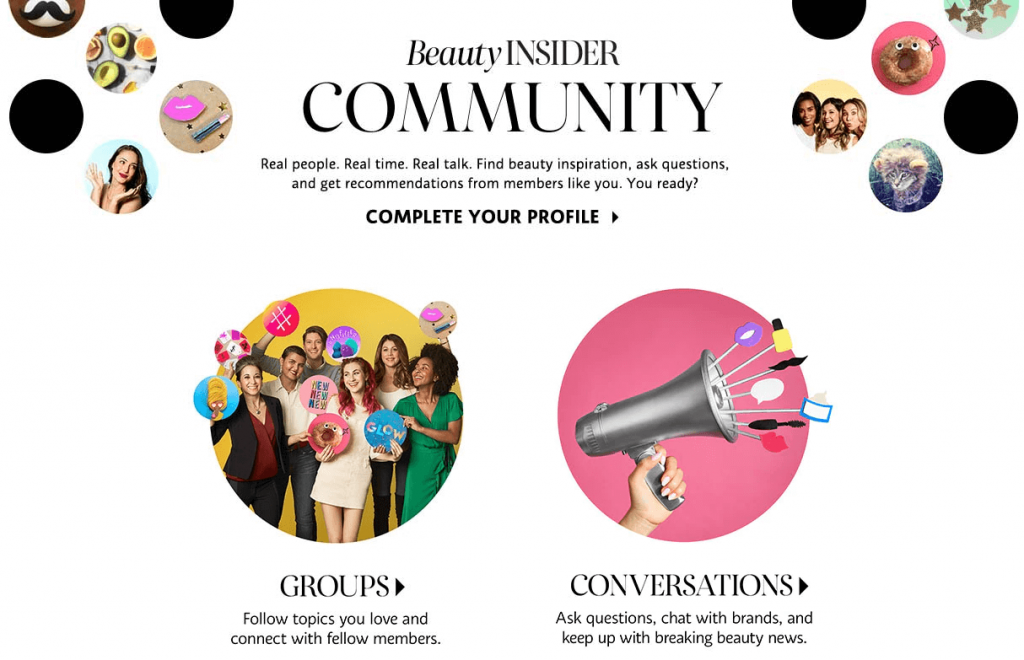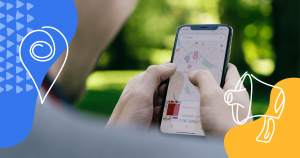There’s a lot more that goes into a brand than just your logo.
Branding your business is the process of creating a recognizable identity that can be used to ensure that stakeholders understand your position, enhance your reputation in the market, increase your visibility, and improve your public relations, all while enhancing your brand in consumers’ eyes.
One of the end goals of branding is to have a dedicated, loyal, and engaged fanbase that actively supports and invests in your brand.
Not only does that provide you with regular sales, but it also creates a community centered around your brand, products, and services.
But what exactly is a brand community, and why is it an important environment to foster?
In this article, we’ll answer those questions.
- What is a Brand Community?
- Why are Brand Communities Important?
- How to Build a Successful Brand Community
- Brand Community Examples
- Wrap Up
What is a Brand Community?
A brand community is a collection of individuals who showcase brand loyalty by being emotionally invested in the brand.
Not only are they regular customers who buy from your brand frequently, but they are also advocates who tell their families, friends, coworkers, and acquaintances about your brand.
They are also the people who read all your new content, follow your social accounts, and actively participate in your brand’s promotions and other activities.
They share your content with others, leave reviews, and highly recommend your products or services.
Most importantly, they are the group that connects to your brand and genuinely enjoys seeing what your brand does.
A community is a place where customers who connect emotionally to your brand come together to enjoy your brand.
This gives them a literal community made up of other fans of your brand and your brand itself.
Why are Brand Communities Important?
The truth is that your community already exists.
Whether you know where it is, how big it is, or how to leverage it is a different matter.
Your brand community lives on social media, but without a strategy in place to connect with it and work with the individuals in it, you could lose out on some major brand benefits.
Those might include:
- Directly connecting with your most loyal, engaged customers.
- Helping your followers get more out of your brand’s products and services.
- Turning your customers into brand ambassadors who bring in more business.
- Removing the dependency on expensive mediums like paid ads to increase your brand awareness.
- Better levels of customer retention.
- Getting direct feedback, ideas, and information from your audience.
- Leveraging user-generated content in your marketing strategies.
- Increasing the amount of public relations opportunities your brand has.
- Giving you a better insight into your customer’s needs and wants.
- Creating a value-added experience for your customer journey.
- Helping other customers find each other.
At its core, a community is a powerful tool that can be used to help your business grow.
It is the perfect audience for testing new ideas, sharing content with, and encouraging user-generated content that drives even more business for your brand.
How to Build a Successful Brand Community
When you know who your brand community is and where they are, you can receive many different benefits.
However, you first need to figure those crucial steps out.
As mentioned earlier, your community already exists in some form somewhere on social media, but without your input, you don’t have control over what it does or any way to leverage that power for your own marketing.
Let’s go through the steps that you need to take in order to build a successful brand community for your business and develop long-lasting, successful relationships with your core audiences and most loyal customers.
1. Define Your Brand
Your brand needs to be clearly defined before you can really start building up your community around it.
After all, if your brand doesn’t have a clear direction, voice, or purpose, it’s hard to get a community to rally around your business.
Try and ask what your brand is known for, what you want to do, and what types of missions and values do you want to represent.
2. Create Your Brand’s Personality
Not only does your brand need to have a clear voice and values, but it also needs to have a unique personality.
The brand personality you create helps to guide the types of conversations you have with your customers and the style of communication you have.
Are you a fun brand that will snap back, or are you an informative leader? Knowing will help you make your personality visible throughout your community.
3. Invest in Cross-Channel Promotions and Engagement Strategies
While your brand community likely originates and spends most of its time on social media, in order to get the most out of your brand you need to leverage different channels.
By focusing on cross-channel promotions from your website, social channels, and apps, you can make sure that no touchpoints are missed.
4. Engage with Your Brand Community on a Regular Basis
A brand community isn’t something that you can set and forget. You need to be in communication with your community regularly.
You need to respond to questions, create discussion points or posts, and directly message customers to create one-on-one relationships with individuals in your community.
That ensures that you don’t become forgotten by your most loyal customers.
5. Keep Things Engaging and Entertaining
You don’t want to just post blog posts and articles to your brand community.
You need to send them interesting and engaging content to keep up their interest and develop your own brand identity.
New contests, rewards, challenges, polls, and promotions can help keep your community entertained and engaged with your brand.
6. Develop an Educational Blog
While you want your interactions with the individuals in your brand community to be interesting and engaging, you also want to provide them with valuable educational content.
That will help them learn more about your brand beyond a superficial level, which can encourage more purchases down the road and more accurate recommendations of your brand.
For that, you can count on WriterAccess, a platform that combines human creativity with AI efficiency to help you create the best educational content for your audience.
7. Measure Your Results
Finally, you’ll want to measure the results you get from your strategies.
While it’s important to invest in your brand community, you’ll want to make sure your return on that investment is worth the effort.
Try setting clear goals for each interaction or content piece you give your community and measure to see if you’ve achieved those goals.
Brand Community Examples
Now that you know how to build your own community and leverage them for your own marketing strategies, let’s take a look at some examples of brand communities from major businesses.
These companies have spent a lot of time developing and creating a brand community that sets them apart from competitors and stands out as a brand that cares about its community.
Apple

Apple has one of the most loyal customer bases out of any company in the world.
In order to further nurture that base, Apple created the Apple Support Community that directly connects customers to each other to try and solve troubleshooting or product issues while also talking about their favorite products, tips, or suggestions.
This helps to create user-generated content and encourages more customer engagement.
Starbucks

Starbucks is often considered one of the best examples of a brand community, and almost their entire brand image focuses around the community they’ve built.
With community and social initiatives, complex rewards programs, and attention-grabbing contests and promotions using user-generated content, Starbucks has become one of the leaders of brand communities.
Lego

Lego, the building block toy company, became much more than just a box of bricks by creating in-person community gathering spaces like Legoland amusement parks and museums.
They also have a site called Lego Ideas where people can submit their own Lego creations and even have the chance to have their designs sold in stores.
Sephora

Sephora, a personal care and beauty supply store, is successful with its brand app which takes the community from social media to a more controlled platform.
It gives members of the community a place to share beauty tips and product photos while talking directly to each other about colors, tips, and products.
This creates a warm, immersive environment for their brand community.
Wrap Up
Creating a community means that you can nurture and reward your best customers and build a brand image that focuses on the customer experience.
The most successful companies in the world have strong brand communities where they can communicate and build authentic interactions with their loyal customers.
While having a brand community is one of the end goals of your branding strategies, there’s a lot of work that goes into maintaining and managing that community.
A community manager plays a key role in growing, managing, and perfecting your brand community. To learn more about them, check out our blog post!










